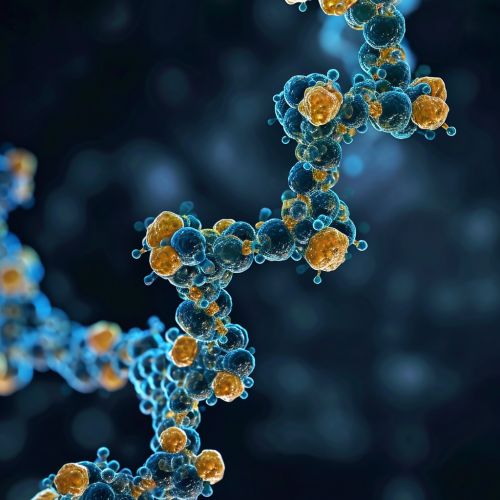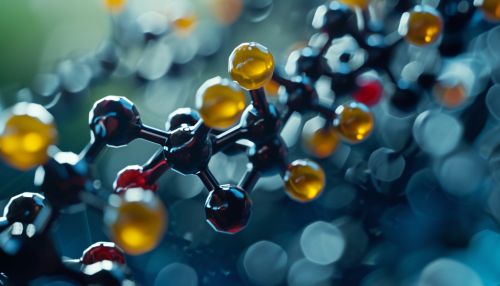Terpene Synthase
Overview
Terpene synthase is a class of enzymes that catalyzes the conversion of prenyl pyrophosphates into various terpenes and terpenoids. These enzymes are found in all living organisms and are particularly abundant in plants, where they play a crucial role in the biosynthesis of many secondary metabolites. Terpene synthases are responsible for the vast diversity of terpenes found in nature, which includes over 40,000 different compounds.


Structure and Mechanism
Terpene synthases are typically composed of two domains: an N-terminal metal-binding domain and a C-terminal terpene synthase domain. The metal-binding domain is responsible for binding the divalent metal ion (usually Mg2+ or Mn2+) that is required for the enzyme's catalytic activity. The terpene synthase domain, on the other hand, is responsible for binding the prenyl pyrophosphate substrate and catalyzing its conversion into a terpene.
The mechanism of terpene synthase involves the ionization of the prenyl pyrophosphate substrate to form a highly reactive carbocation intermediate. This intermediate can then undergo a series of rearrangements, including cyclizations and hydride shifts, to form the final terpene product. The exact nature of these rearrangements is determined by the specific terpene synthase enzyme and the structure of its active site.
Classification
Terpene synthases are classified into two major classes based on their sequence homology and the nature of their catalytic mechanism. Class I terpene synthases use a two-step reaction mechanism involving the formation of a carbocation intermediate, while Class II terpene synthases use a one-step protonation-initiated cyclization mechanism. Some terpene synthases, known as bifunctional terpene synthases, possess both Class I and Class II activity.
Biological Role and Significance
Terpene synthases play a crucial role in the biosynthesis of terpenes, which are a large and diverse class of organic compounds found in a wide variety of organisms. Terpenes serve many different functions in these organisms, ranging from structural roles in cell membranes to roles in defense against herbivores and pathogens. In plants, terpenes are often responsible for the characteristic aromas of many flowers and fruits, and they also play a key role in plant-pollinator interactions.
In addition to their biological roles, terpenes have many practical applications. They are widely used in the perfume and flavor industries, and they also have potential uses in biofuel production and as pharmaceuticals. The study of terpene synthases is therefore of great interest in both basic and applied research.
